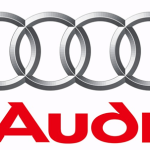- Branche: Automotive
- Number of terms: 4813
- Number of blossaries: 0
- Company Profile:
A subsidiary of Volkswagen, the Audi Group, comprising the two brands Audi and Lamborghini, is one of the world’s leading carmakers in the premium and supercar segment. The core of the Company is the Audi brand. It offers its products under both the Audi and Lamborghini brands, as well as sells ...
The energy-absorbing bumper system can withstand minor parking impacts at speeds not exceeding 5 mph without any significant damage. The bumper’s plastic surface can restore itself after point loadings so that repair is normally not required. For that reason they are also called “self-restoring bumpers”.
Industry:Automotive
Proactive environmental protection prevents negative influences such as noise and emissions through advance planning or new technologies (water-soluble paints, advanced engine management, economical driving). Corrective environmental protection prevents negative effects of existing conditions (such as effluent treatment, catalytic converter, noise insulation). In the automotive industry, environmental protection starts when a new vehicle or production facility is planned and built, and continues through to the reprocessing or recycling of the materials previously installed or used. The driver can also make a contribution during use through economical and conscientious operation.
Industry:Automotive
Ergonomics is the study of human performance and working conditions. Audi plans and designs the interiors of its cars according to the latest findings in this scientific discipline. All display and control functions that the driver must read or use to control the vehicle during operation must fulfil the requirements established to ensure active safety and unimpaired comfort of the driver and passengers. Ergonomically optimized seats increase the comfort and well-being of all vehicle occupants, particularly on longer trips.
Industry:Automotive
The exhaust emission control system converts the pollutants created during the combustion process into substances more compatible with the environment. The central element in the car’s exhaust emission control system is the catalytic converter. An oxygen sensor or lambda probe measures the residual oxygen in the exhaust gas and adjusts the engine’s fuel-air mixture to the correct ratio. Powerful engines often have up to four pre-converters and two main converters.
Industry:Automotive
Exhaust gas recirculation (EGR) is the controlled diversion of some of the combustion gases back into the combustion chamber. This lowers the combustion temperature and reduces oxides of nitrogen (NOx) in the engine. This is a very effective process, because oxides of nitrogen tend to rise disproportionately with increased combustion temperatures. There are two methods of exhaust gas recirculation: internally through overlap of valve opening times and externally with recirculating valves and manifolds.
Industry:Automotive
Front-wheel drive “pulls” the vehicle forward. For this reason, a front-wheel-drive car is in principle more controllable and tracks better than conventional rear-wheel drive. On slippery roads in particular, the front-wheel-drive car has an advantage over rear-wheel drive because the weight of the engine is over the driven wheels, thereby increasing traction. Today almost 80 percent of the world’s passenger cars have front-wheel drive. Audi models feature either FrontTrak front-wheel drive or quattro permanent all-wheel drive.
Industry:Automotive
FSI direct injection technology increases the torque and power of spark-ignition engines, making them as much as 15 percent more economical and reducing exhaust emissions. In contrast to conventional intake manifold injection on conventional spark-ignition engines, FSI engines inject fuel directly into the combustion chambers. This technology dispenses with the throttle plate, "unthrottling" the engine, reducing heat loss, and thus increasing output while reducing fuel consumption.
The system uses two charge-air supply modes: stratified charge at partial load and homogeneous operation at full load. In the stratified charge mode, a combustible fuel-air mixture is only produced in a defined zone around the spark plug. The engine management electronics monitor engine load and adjust injection timing, pressure, quantity parameters as well as the air flow inside the cylinder via the air intake channel. At full load, FSI increases compression as well as engine efficiency and performance.
Industry:Automotive
Only fully galvanized bodies offer optimum corrosion protection. This is the key to Audi’s 12-year warranty against rust perforation. The floor pan, frame elements and internal elements not normally visible are partially hot-galvanised. The visible outer panels and other elements, however – roof, sides, doors and filler flap, for instance – have a particularly fine galvanized surface. Both types of sheet-metal components are galvanized before delivery to the factory. Zinc coating also adds stiffness to the sheet metal
Industry:Automotive
The global positioning system (GPS) is a network of 24 satellites in high geosynchronous orbit above the Earth. Only 12 of these satellites are above the horizon at a given time. Vehicles with Audi navigation systems are equipped with an antenna capable of receiving these GPS signals, and converting them to precise latitude, longitude and altitude coordinates. These data are combined with vehicle speed and direction information in order to provide route guidance.
Industry:Automotive
Featured on Audi A3 and Audi TT quattro models, the only sports car in its class with permanent four-wheel drive, the latest generation of the Haldex clutch distributes power to the front and rear wheels to provide optimal traction.
If a difference in speed occurs between the front and rear axles, the system immediately builds up pressure by means of two pumps integrated into the clutch, and pressurizes the control piston. This then presses the plate sets together with a pre-defined force, so regulating the torque transmitted to the rear axle.
In normal driving conditions, the clutch directs 85 percent of the torque to the front wheels, but in extreme circumstances it is able to transmit as much as 100 percent of the forces to one of the two axles. The control unit does this in response to various sensor signals, including wheel speed, ABS braking functions and engine management.
Industry:Automotive
